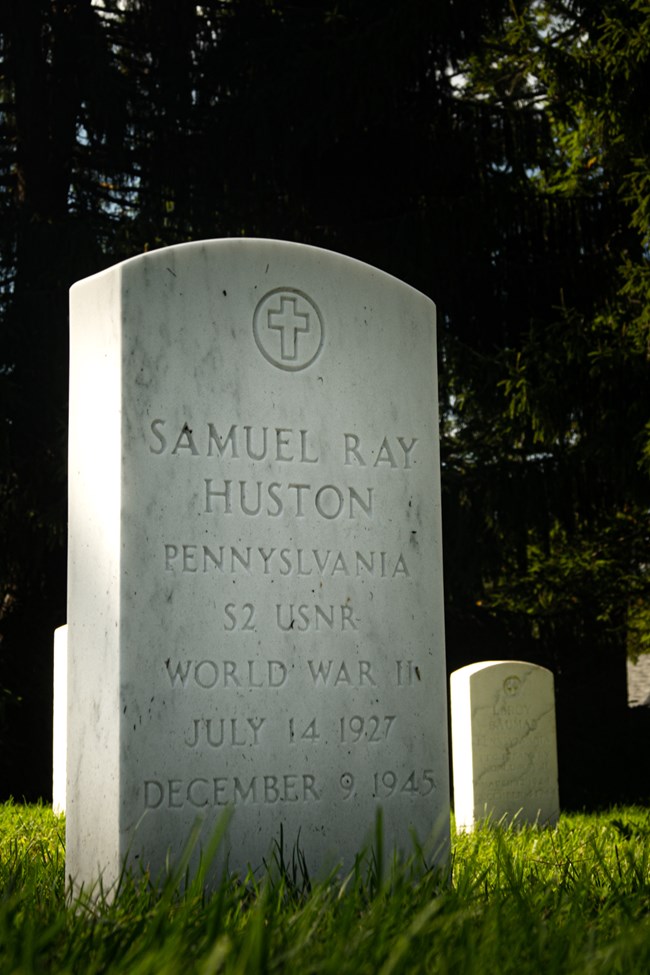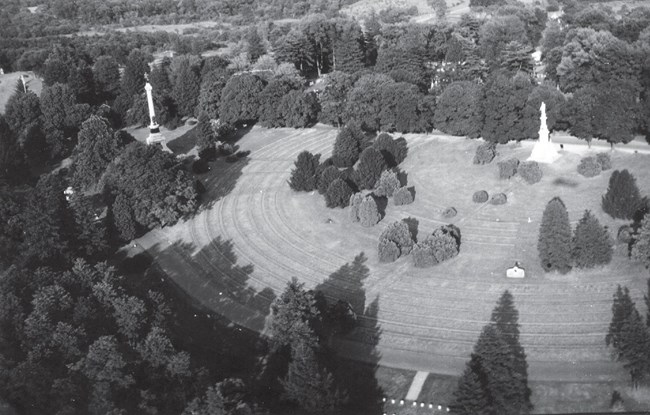Part of a series of articles titled World War II and the Gettysburg National Cemetery.
Article
World War II Burials in Gettysburg National Cemetery
What do we owe to those who give their lives for their country? How do we honor those who give their lives for their country?

NPS Photo
The Gettysburg National Cemetery itself was at the forefront of the burgeoning national cemetery system during the American Civil War. Created in 1863 for the Union dead from Gettysburg, the cemetery was a projected spearheaded by Pennsylvania, but with the help of other Northern states to bring it into being. After its heralded dedication in November 1863, the reburials of Union dead were finished in the spring of 1864. By the end of the war, other cemeteries were being created for the burial of Union dead across the country. By the 1870s, Congress expanded these cemeteries, opening them to veterans of the Civil War as well as those who had given their lives during the conflict. As the United States engaged in future conflicts, the nature of American cemeteries changed as well due to necessity.
After World War I, the United States grappled with what to do for those killed in action in Europe. Questionnaires were sent to next of kin, giving them the option to have their loved one interred in an American cemetery in Europe or to be brought home. Over 45,000 families chose to have their loved ones brought home, many to be buried in a private family plot. More than 30,000 other families chose to have their loved one buried in a cemetery overseas, giving rise to the American Battle Monument Commission, which cares for overseas American military cemeteries to this day.

NPS Photo
Here in Gettysburg, Pennsylvania, the national cemetery had expanded slightly since the 1860s. Civil War veterans passing away and the aftermath of World War I had led to new burials, but nothing like what was seen in the late 1940s. In the initial round of next of kin questionnaires in 1947, the response rate selecting Gettysburg as their loved one’s final resting place was so high that Park Service officials worried the cemetery would quickly be overwhelmed with reburials. Park Service officials decided to limit the World War II reburials to no more than 600. Over the next three years, over 500 over those killed in action during World War II were buried here in Gettysburg.
The cemetery continued to expand in the 1950s and 1960s, with the Korean and Vietnam Wars taking place. Worries over a lack of space led the Park to acquire a new tract of land nearby, which was eventually opened up as an annex to the original national cemetery in 1968.
The World War II burials at Gettysburg comprise stories from across the war. Soldiers from North Africa, airmen from the skies above Europe, and sailors from the Pacific alike are all represented by those who now call Gettysburg National Cemetery their final resting place.
For more on the World War II burials in the Gettysburg National Cemetery, visit our videos page, which has 18 vignettes about individual soldiers, sailors, airmen, and marines who served in WWII.
Last updated: August 15, 2022
